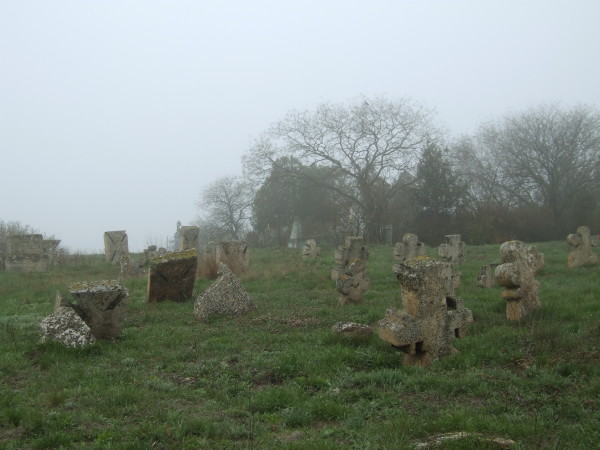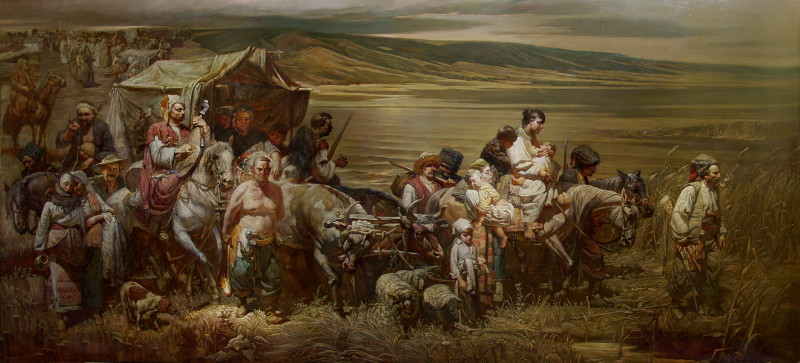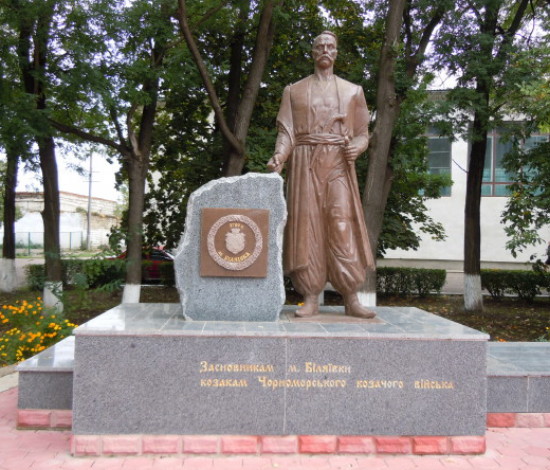Black Sea Cossacks
Black Sea Cossacks (Чорноморське козацтво; Chornomorske kozatstvo). A military formation organized by the Russian government out of the former Zaporozhian Cossacks. After the destruction of the Zaporozhian Sich in 1775, some of the Cossacks migrated to Turkish territory and founded the Danubian Sich, but most of the Cossacks remained in the Zaporizhia and were registered as treasury peasants. In the 1780s the Russian Gen Grigorii Potemkin tried to re-establish Cossack units on a voluntary basis and to use them for the defense of southern Ukraine against the Turkish threat. With the outbreak of war with Turkey (1787–91) the Russian government began to organize the Zaporozhian Cossacks and established, by the ukase of 2 February 1788, the Army of Loyal Cossacks under the leadership of the Zaporozhian officers S. Bily and Z. Chepiha. The army's headquarters was located in Oleshky, where almost 12,000 Cossacks were organized. These units fought against the Turks under the leadership of Gen A. Suvorov. In 1788 they were renamed the Black Sea Cossack Host. This host had the same organizational structure as the Zaporozhian Host, the same dress, etc. In 1790 the Russian government began to resettle the Cossacks on the land between the Boh River and the Dnister River, thus uniting them with the Boh Cossack Army with headquarters in Slobodzeia on the Dnister.
At the end of the war the Russian government did not want the Cossack host to be settled close to the center of Ukraine and to the Danubian Sich, so in 1792 it resettled the Black Sea Cossacks in the Kuban region, along what was known as the Black Sea frontier, which extended along the right bank of the Kuban River from the mouth of the Laba River to the Sea of Azov. By 1795 about 25,000 Cossacks as well as some Russians had settled there. They were granted an area of about 30,000 sq km between the Kuban River and the Yeia River and were given self-government. But as early as 1800 the right of the Black Sea Cossacks to elect officers was revoked. Acting otamans were appointed by the Russian government. In the first half of the 19th century (1809–11, 1821–5, 1848–50) new settlers, consisting of former Cossacks from the Chernihiv region, Poltava region, and Kharkiv region and of Ukrainian peasants escaping from social oppression in Left-Bank Ukraine, enlarged the host. The administrative organization of the Black Sea Host was based on the Zaporozhian system. There were 40 kurins, 38 of which were named after kurins that formerly existed within the Zaporozhian Sich. In the 1840s the kurins of the Black Sea Host were renamed stanytsias, and these were organized into four military districts: Taman, Katerynodar, Beisuh, and Yeia. The headquarters of the host was located in Katerynodar, which was built in 1794 and is now known as Krasnodar. The host was assigned the task of defending the Black Sea frontier along the Kuban River and of participating in the Caucasian campaigns. Besides doing military service, the Cossacks engaged in farming, animal husbandry, and fishing. In 1860 the Black Sea Host was amalgamated with the western part of the Frontier Army (six brigades) and was renamed the Kuban Cossack Host. The Black Sea Host perpetuated for almost a century, although in a slightly altered form, the traditions of the Zaporozhian Cossacks.
BIBLIOGRAPHY
Popko, I. Chernomorskie kazaki v ikh grazhdanskom i voennom bytu (Saint Petersburg 1858)
Korolenko, P. ‘Chernomortsy,’ in Sobranie sochinenii (Saint Petersburg 1874)
– Chernomorskoe kazach'e voisko (1775–1792) (Katerynodar 1892)
Shcherbina, F. Istoriia Kubanskogo kazach'ego voiska, 1 (Katerynodar 1910)
Golobutskii, V. Chernomorskoe kazachestvo (Kyiv 1956)
Arkadii Zhukovsky
[This article originally appeared in the Encyclopedia of Ukraine, vol. 1 (1984).]


